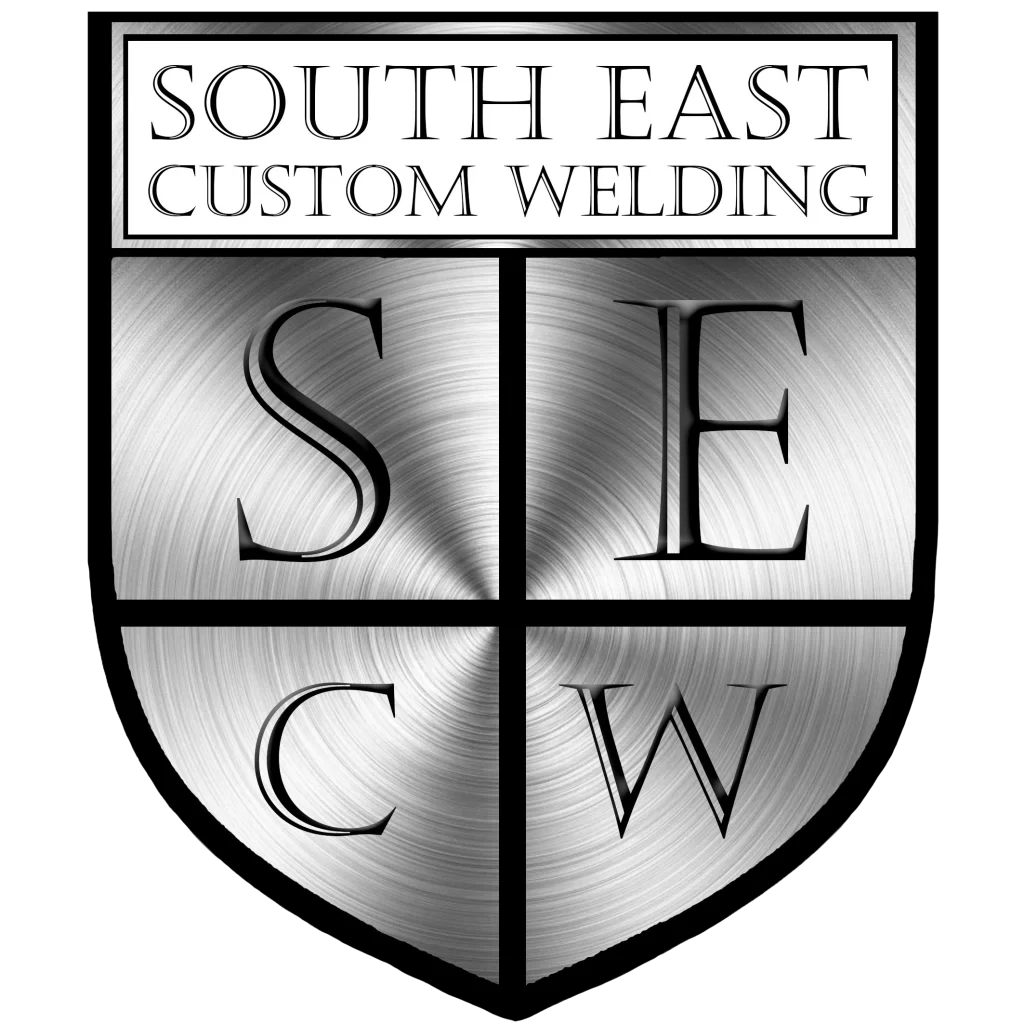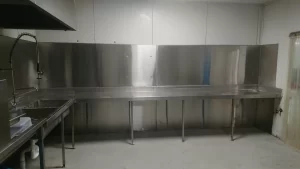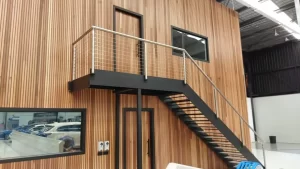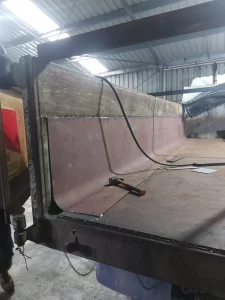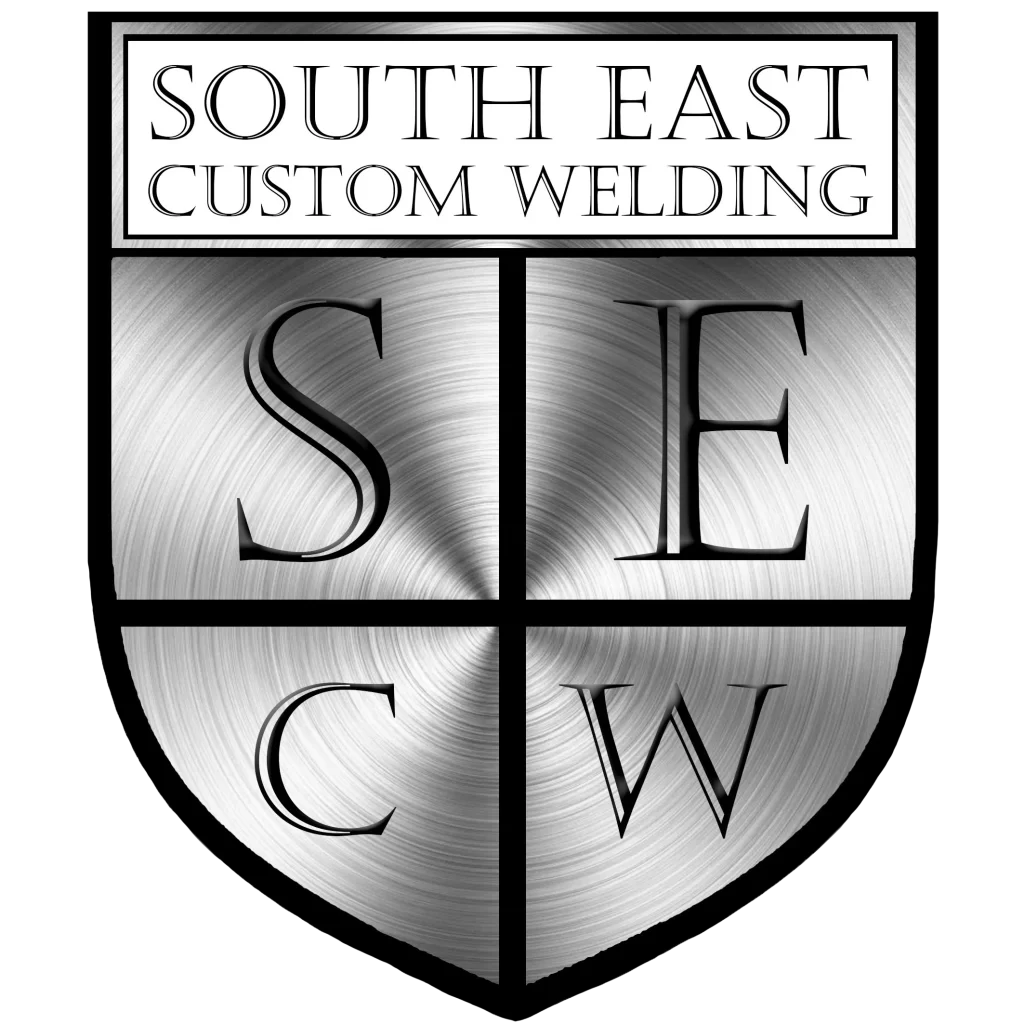In this article, we’d love to share our professional experience and knowledge to provide an overview of the concepts and practices necessary for a perfect General Fabrication.
Well, I have focused on the TIG and MIG welding techniques in this article.
Besides, we’ll tell you some professional tips, the tools, and the equipment needed to achieve outstanding results.
Without further ado, Let’s dive in!
What is a General Fabrication?
General Fabrication is the process of cutting, shaping, and welding metal materials to create custom parts or structures.
It’s a major skill for welders and metalworkers, to craft various items from metal furniture to automotive components.
If you want successful results from your general fabrication process, you need to produce high-quality, functional, and durable finished products.
So, what techniques and tools can be used for that? Don’t worry, we’ll explain.
Welding Techniques and Tools for General Fabrication
Welding techniques and tools are essential for General Fabrication. There are a few welding techniques used in this process, including MIG, TIG, stick welding, etc.
Among them, MIG and TIG techniques are particularly important in General Fabrication.
1. MIG Welding Technique and Tools
Metal Inert Gas (MIG) welding is a widely used welding technique in General Fabrication.
Working with Aluminum
The MIG technique involves feeding a continuous wire electrode into a weld pool to join two metal pieces.
So, MIG welding is known for being fast and efficient and is commonly used for thicker metals.
Pros and Cons of MIG Welding
There are pros and cons to consider for MIG welding depending on the specific application and context.
So, let me share with you the most common ones.
Pros | Cons |
|---|---|
High welding speed and productivity Good for thicker materials and larger projects Easy to learn and use for beginners Can be used with a variety of materials, including steel, stainless steel, and aluminium Less expensive than TIG welding equipment | Requires a shielding gas, which adds to the cost Less precise and may require more post-welding grinding Not ideal for outdoor use due to shielding gas Need a steady hand and good control over the weld pool Requires a clean work surface and proper preparation |
For What Can I Use MIG Welding?
MIG welding can be used for a variety of applications in different industries. It’s commonly used in manufacturing, automotive repair, construction, and DIY projects.
- MIG welding can weld steel, aluminium, and other metals.
- It's a versatile option for various applications such as heavy constructions like building materials and bridges etc.
- MIG welding creates a strong and clean weld that requires minimal cleanup.
- Useful for welding thin materials.
- A popular choice for welding pipelines, frames, and other structures.
Tools and Machines Required for MIG Welding
MIG welding requires specific tools, including a MIG gun, wire feeder, and welding wire.
- The MIG gun : The MIG gun directs the wire electrode into the weld pool
- The wire feeder : The wire feeder regulates the speed at which the wire is fed
- The welding wire : The welding wire is the filler material that joins the two metal pieces together
MIG Welding Safety Gear
MIG welding involves several hazards, such as intense light, heat, and fumes.
As a result, appropriate safety gear is critical to protect the welder from injuries.
So, the following are some essential MIG welding safety gear that we always follow:
- Welding helmet with a filter lens and auto-darkening feature
- Welding gloves made of durable and heat-resistant material
- Welding jacket or apron made of fire-resistant material
- Safety glasses or goggles to protect eyes from debris and sparks
- Respirator mask or air-purifying respirator to protect lungs from harmful fumes
- Steel-toed boots or shoes with heavy-duty soles to protect feet from falling objects and hot metal
- Earplugs or earmuffs to protect ears from loud noises
By wearing the appropriate safety gear, welders can ensure their safety and prevent potential injuries while performing MIG welding.
2. TIG Welding Techniques and Tools
TIG welding is a precise welding technique used in General Fabrication.
What is TIG welding?
Tungsten Inert Gas (TIG) welding, also known as Gas Tungsten Arc Welding (GTAW), is a type of arc welding process that uses a non-consumable tungsten electrode to produce an electric arc that melts the metal being welded, creating a strong bond between two metal pieces.
So, TIG welding is useful for producing high-quality, clean welds and is commonly used for thin metals, stainless steel, and aluminium.
Pros and Cons of Tig Welding
Here are some common pros and cons of TIG welding, but remember that these may vary depending on your specific applications and welding conditions.
Pros | Cons |
|---|---|
Produces high-quality, precise welds with minimal spatter or fumes Provides better heat control and can be used for thinner materials Welds can be made with or without filler metal, giving more control over the process Create a better visual appearance of the weld Low heat input reduces distortion | Slower welding speed compared to other processes Requires a high level of skill and control, making it more difficult to learn and master More expensive process compared to other welding methods Tungsten electrodes can be brittle and prone to breaking, requiring frequent replacement Not suitable for high-volume production due to slower speed and higher cost |
Tools Required for TIG Welding
TIG welding needs a few tools, including a TIG torch, tungsten electrode, and filler wire.
I. The TIG torch
This is used to direct the heat onto the metal pieces
II. The tungsten electrode
The tungsten electrode creates an arc that melts the metal
III. The filler wire is then added to join the two pieces of metal together
What is better, MIG or TIG?
We recommend that MIG welding is faster and more efficient for thicker metals, while TIG welding is better suited for thinner metals and produces higher-quality welds.
Overall, while both MIG and TIG welding can produce strong welds, TIG welding is often preferred for applications where high-strength and high-quality welds are required.
However, a better understanding of the differences between TIG and MIG welding can help determine when to use each technique.
Other Tools Needed for General Fabrication
Cutting and shaping tools are essential for General Fabrication.
Let us tell you the most important tools that you need to know for this purpose.
Cutting Tools
Two of the most commonly used cutting tools in this process are plasma cutters and oxy-acetylene torches.
- Plasma Cutters use a high-velocity jet of ionized gas to cut through metal quickly and cleanly
- Oxy-acetylene Torches use a flame fueled by oxygen and acetylene gas to melt and cut through metal.
Both of these cutting tools are essential for creating precise cuts in metal during general fabrication.
Bending and Shaping Tools
Brakes and rollers are two examples of tools used for bending and shaping metal.
- Brakes are used to bend sheet metal into different shapes and angles
- Rollers are used to shape metal into curves or cylindrical shapes.
These tools require skill and precision to use effectively, but they are crucial for creating custom metal parts and components.
Finishing Techniques Used to Prepare the Final Product for Use
1. Sandblasting
Sandblasting is a common finishing technique used in general fabrication to smooth rough edges and remove surface imperfections.
2. Painting
Painting is another important finishing technique used to protect the metal from rust and corrosion.
Besides, a high-quality finish is essential to give the final product a professional look and ensure its durability over time.
Basic Materials Use in General Fabrication
General Fabrication involves working with a variety of materials, including steel, aluminium, and plastics.
Each of these materials has unique properties that make them suitable for different applications.
By understanding the advantages and disadvantages of each material, a fabricator can make an informed decision to ensure the success of the project.
1. Steel
Advantages | Disadvantages |
|---|---|
• Strong • Durable • Widely available • Can be welded and machined | • Heavy • Prone to corrosion • May require coatings for protection |
2. Aluminum
Advantages | Disadvantages |
|---|---|
• Lightweight • Corrosion-resistant • Highly conductive | • Not as strong as steel • More difficult to weld • May be more expensive |
3. Plastics
Advantages | Disadvantages |
|---|---|
• Lightweight • Versatile • Can be moulded into complex shapes • Non-conductive | • May not be as strong as metal • Can melt or deform at high temperatures • May not be suitable for high-stress applications |
Besides, when you are selecting the right material for a specific project requires, remember to consider the following factors.
- The intended use
- Environmental factors
- Budget constraints
Must-Follow Safety Measures in General Fabrication
Safety is of utmost importance when it comes to General Fabrication, especially when working with welding equipment and other tools.
Here are some safety measures our team also followed.
- Wear the proper safety gear when working with welding equipment or other tools, including helmets, gloves, and safety glasses.
- Ensure that the workspace is well-ventilated to minimize the risks associated with welding fumes and other hazardous materials.
- Never work alone when using welding equipment or other dangerous tools. Have a partner nearby who can help in case of an emergency.
- Keep the workspace clean and organized to minimize the risks of accidents or injuries.
- Regularly inspect all tools and equipment to ensure they are in good working condition.
- Take breaks as needed to prevent fatigue, which can increase the risk of accidents.
- Be aware of your surroundings and potential hazards, such as tripping hazards or flammable materials.
Design and Planning for Perfect Output
When we design a product, we always consider several factors such as material selection, dimensions, and intended use.
Material selection plays a significant role in determining the product’s durability and strength. Proper dimensions ensure that the product will fit and function as intended.
Thus, it is essential to consider all factors to create a successful design that meets client requirements and maximizes production efficiency.
The following tips will help you to create an effective design plan and to revise it as needed:
- Consider all factors when designing a product, including material selection, dimensions, and intended use.
- Research and analyze the market to understand current trends and competition.
- Communicate with clients to understand their needs and preferences.
- Set clear goals and establish a timeline for the project.
- Use software tools to create and visualize designs before fabrication begins.
- Revise the design plan as needed to optimize the production process and ensure that the final product meets all requirements.
- Prioritize efficiency and cost-effectiveness during the design and planning stages to minimize waste and maximize profits.
General Fabrication Projects
General Fabrication projects can encompass a wide range of products, including metal furniture, custom automotive parts, and more.
Let us show the few general fabrication projects we’ve done for our clients in Southeast Gippsland.


Common Mistakes to Avoid in General Fabrication Projects
One common mistake people make when working on these projects is not taking accurate measurements, which can lead to errors and wasted materials.
To avoid this,
it’s important to use precise tools and double-check all measurements.
If issues do arise during fabrication, troubleshoot by identifying the root cause of the problem and finding a solution that addresses it.
Conclusion
In conclusion, General Fabrication is a challenging yet rewarding craft that demands skill, expertise, and precision..
So, you can improve your knowledge and expertise in this field by following the tips and techniques given in this article including proper safety measures, effective planning and design, and troubleshooting techniques.
We are always here to help you with your General Fabrication projects, and we look forward to the opportunity to work with you and deliver exceptional results.
Trust our team to bring your visions to life with our unparalleled commitment to quality and craftsmanship.
